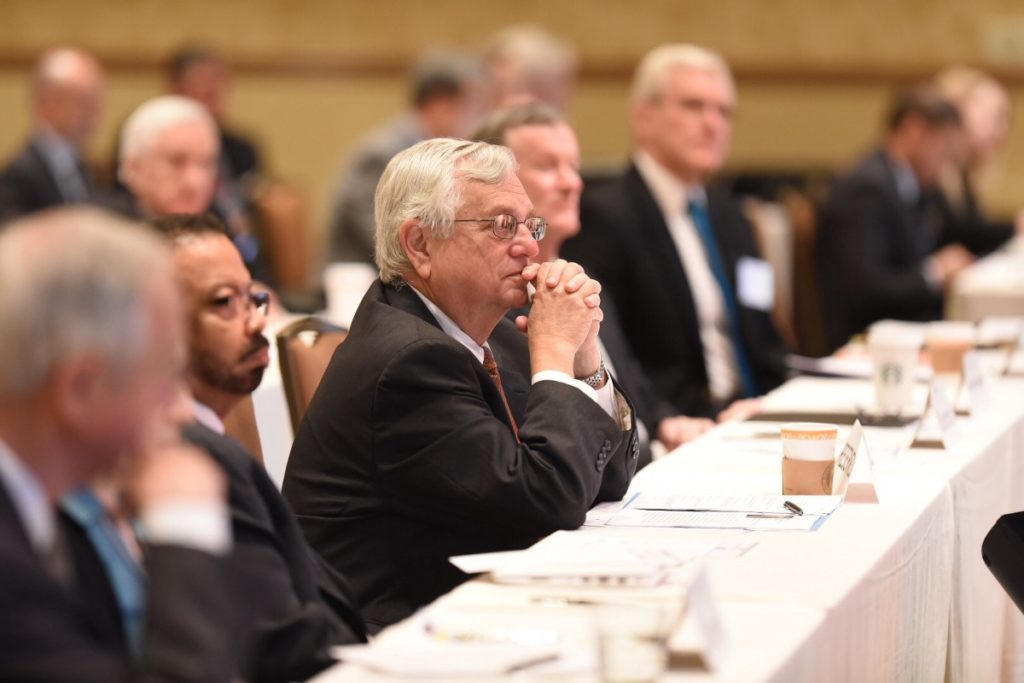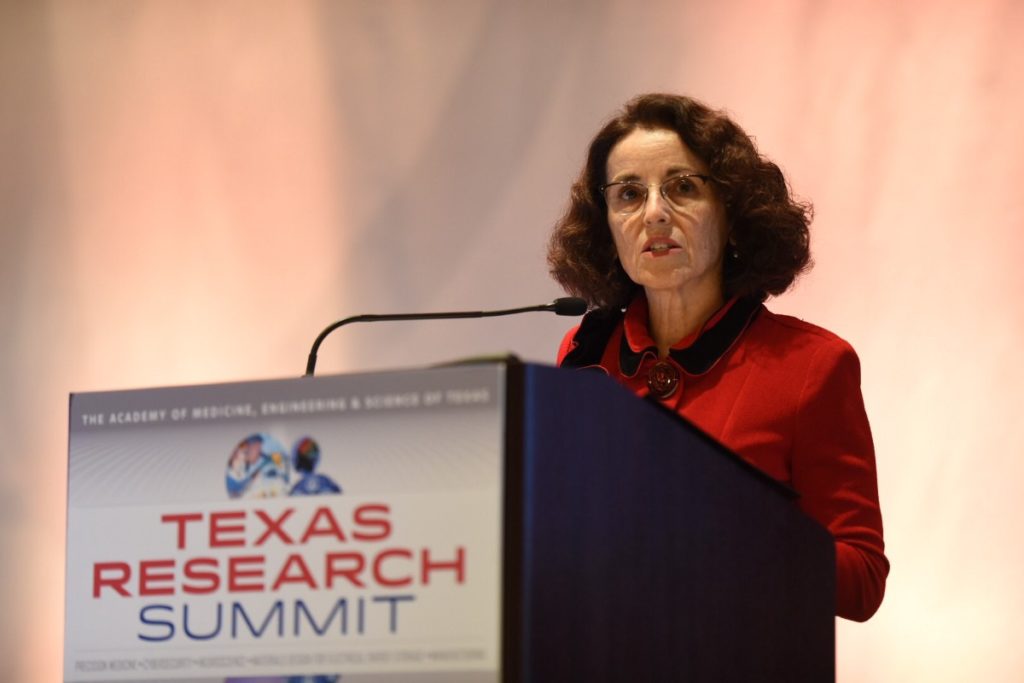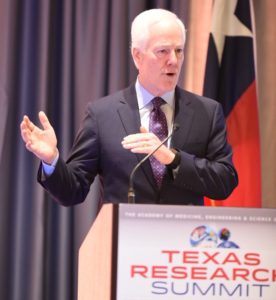Recap the Texas Research Summit With Gordon England

When people think of what drives the Texas economy, industries like energy or agriculture likely come to mind. But the Lone Star State is also home to a booming research sector, with world-class scientists hard at work fighting heart disease, making breakthroughs in battery technology and discovering innovative ways to battle cancer.
To help this research go even farther, on Friday, November 13, 2015, The Academy of Medicine, Engineering and Science of Texas (TAMEST) convened the first-ever Texas Research Summit, a gathering of Texas’ top research leaders and four federal research agencies. The goal of the summit was to highlight the outstanding research and innovation taking place in Texas, and help Texas be more competitive in seeking federal research funding.
Attendees like Texas Senator John Cornyn, National Science Foundation Director France Córdova, and University of Texas System Chancellor Bill McRaven spoke about the many accomplishments in Texas research and the opportunities to achieve even more. Gordon England, Former Secretary of the Navy and TAMEST Board Member, served as Program Chair for the summit. We sat down with England afterwards to learn more about what the summit accomplished, and what he hopes to see in the future for Texas research.
How did the Research Summit come about?
“This is an outgrowth of a very brief discussion I had with Chancellor McRaven on the importance of research at the 2015 TAMEST Annual Conference. He mentioned that it’d be great to bring people from Washington to Texas, so that was the whole germ of the idea of bringing this conference together.

TAMEST President Ken Arnold listens to a presentation at the summit.
We wanted people to interact — we wanted coordination and collaboration, we wanted people to be able to meet with the speakers and to have time together. Because that’s what this is all about. As we heard at the summit, everybody talked about the need for interdisciplinary research collaboration. And that’s also true for not just for technologies, but also for institutions, particularly institutions of research.
Most of the value of a gathering like this isn’t necessarily in the talks and presentations themselves, it’s in the discussion and interaction that takes place before, during, and after the summit. That’s the whole idea.”
What do you think makes Texas a unique research destination?
“This is a research summit, but the end result isn’t research. Research is strictly a means to an end. We do research because at the end of the day, we want new technologies and new methodologies to improve the human condition: we want better economies, and we want a better tax base, so state and federal governments can thrive. So this is all about healthy economies, it’s about new businesses, it’s about jobs, it’s about improving people’s lives in many ways. But you actually need a whole system, it’s not just research.

Dr. France Córdova of the National Science Foundation speaking at the summit.
And Texas is a great place to start a business, it’s an easy place to transition from research to business and gain the benefits of the research. In my view, it’s a perfect place to have research, because ultimately you can achieve the benefits of the research in Texas.”
What were some key takeaways for you from this summit?
“Dr. France Córdova and the National Science Foundation have about eight billion dollars in research funding, so it’s very important Texas be competitive in that area, because that’s one of the largest funding areas for research. For Texas to be competitive, it really has to be competitive in the National Science Foundation. So I hope it was helpful for our Texas Vice Presidents of Research and our top researchers to better understand what the National Science Foundation is about and also getting to know her personally. I was encouraged that she met with Chancellor McRaven and Senator Cornyn individually.

Senator John Cornyn.
And of course it’s very important that Sen. Cornyn, who’s Majority Whip in the Senate, attended, as he’s very influential in terms of regulations and research funding. You have to have Congressional support, because after all, these are appropriations — it all starts with Congress. And so I think it was very important to the people in Texas to have both the Senator and the Chancellor here; it demonstrates their commitment to research in the state.
I was also very impressed that TAMEST Vice President David Russell could coordinate all these speakers around the state of Texas, and really get the best experts in each field here to the summit. That was key to this summit — without his good work, we couldn’t have had this conference.”
Now that the summit’s concluded, what’s next? What kind of results are you hoping to see?
“I hope Texas becomes more competitive for research dollars, but also that there’s more collaboration amongst research institutions in Texas. Frankly, in any large organization (and our universities are very large organizations), it’s very hard to connect people within much less between organizations. On top of that, Texas is a huge state with research institutions spread across it. And a lot of people came here to this summit from all those institutions, so now they know each other and how to reach each other, and now they also know some people in the federal government. So my hope is this make Texas more competitive and collaborative when it comes to federal research dollars.”

